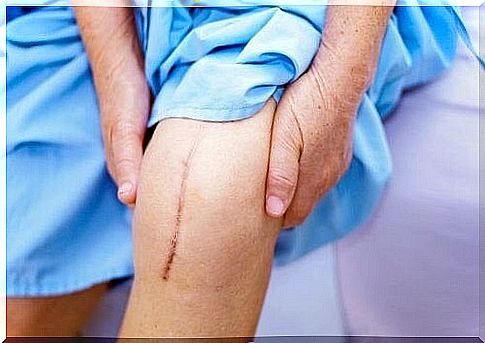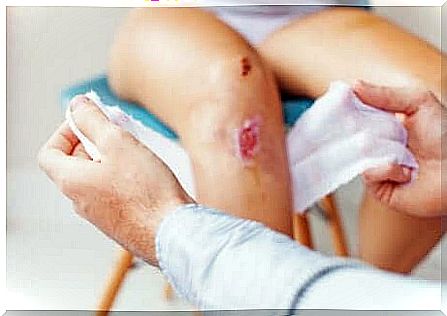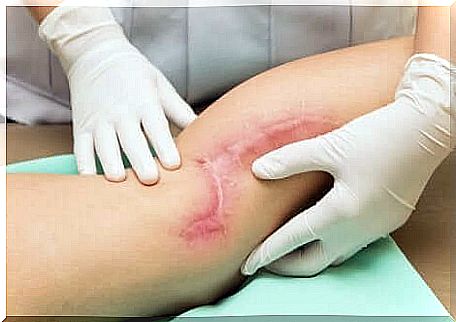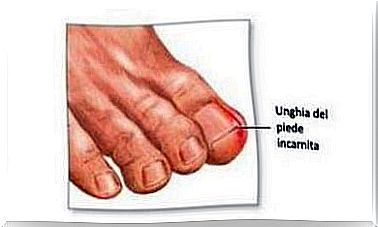Skin Healing: Stages And Types

There are different types of skin scarring as not all wounds are the same. The way in which an injury occurs can result in more or less profound damage.
In this mechanism, an important weight is given by the affected skin layer. The skin is made up of three layers: epidermis, dermis, hypodermis or subcutaneous tissue.
The epidermis is the most superficial layer in contact with the outside, while the hypodermis is the deepest layer in contact with the inside of the body. Between one and the other we find the dermis, capable of producing pathological scars when hit by a wound deep enough to penetrate it.
The dermis is a highly specialized tissue, hence the difficulty the body can present in repairing it. Let’s first look at how the skin reacts when we get injured and the types of scarring that can occur.
Stages of skin healing
When the skin is injured, various skin repair mechanisms are activated. How these stages are concluded determines the resulting scar. There are five phases:
1. Coagulation and vascular response
Immediately after the injury, the blood flushes the wound. Foreign bodies are carried away to prevent infections. The blood vessels then close to clot and stop bleeding, aided by platelets.
2. Inflammatory phase
At this stage, the skin becomes red, but this does not indicate the onset of an infection. The redness is due to the intense cell movement and increased blood supply. Light colored inflammatory serum may also form in the wound, again not indicative of infection.
3. Proliferative phase
The central moment of repair begins. The cells most involved are the fibroblasts that rush to the lesion area to produce collagen. Collagen is the main component of the dermis, so it replaces lost tissue.
4. Epithelialization
The last stage of wound repair aims to restore the layer that separates the outside from the inside. The skin can perform its barrier function thanks to the epidermis.
Epithelialization allows the lost epidermis to be reconstituted through a group of cells called keratinocytes.
5. Tissue remodeling, the last phase of skin healing
Once the wound has closed, the body must define the final appearance of the scar. If the wound has stopped at the epidermis, there is probably only a process of cell regeneration and the scar will tend to be normal. When the wound is deep, there is a greater chance of a pathological scar.

Types of skin scarring
The stages of skin healing following a wound are always the same, but not all wounds are the same. Based on this, infisiolog dermatology and surgery distinguish three types of scarring.
Healing by primary intention
It is the name given to the healing process that occurs when the wound is small, not deep and the edges of the wound are close. The scars are rarely permanent.
Second intention
It is the healing process of a deeper wound, which has affected the dermis. The result is typically a larger, more conspicuous scar. The main cause is loss of substance or a very large gap between the wound edges.
When this happens, the dermis must form a lot of new tissue in the granulation phase, which is the reason for the final deformation.
Third intention
This type of scarring is associated with medical intervention. It occurs when a second suture is made over an existing first or when dermal grafts are added for repair. It is a scar guided by the surgeon’s hand.
For each type of skin scar, a type of scar

Although some scars are normal and desirable, others are considered pathological. In medicine they are classified into:
- Normal : they follow a normal healing process. The end result is a fine line.
- Atrophic : due to the loss of substance in the skin, a small depression remains in the area where the wound was located. They are typical of acne.
- Hypertrophic : they are caused by scarring with excessive collagen production. The resulting skin is thick and protrudes above the epidermal level. It usually forms on areas with constant movement such as the knee.
- Keloid : large and excessive hypertrophic scar. It can sting and even burn. It usually extends beyond the initial limits of the wound.
- Contracture : is the name given to scars that result from a burn. Scar tissue contracts and deforms the surrounding area.
Any type of skin scarring resulting in a scar can be treated. If you are concerned about the appearance of a scar, consult your dermatologist or surgeon ; will be able to advise you on the best treatment.









